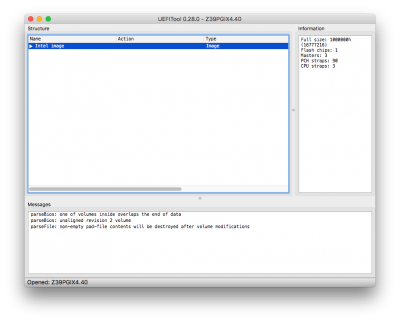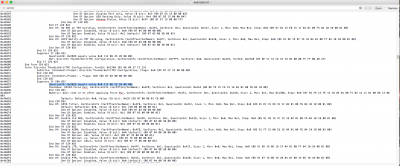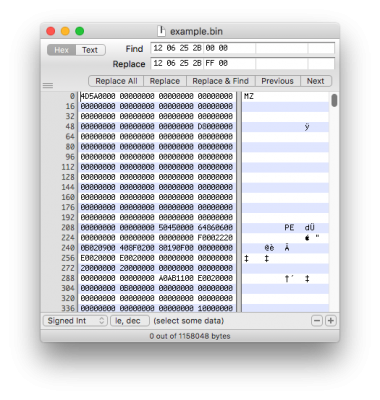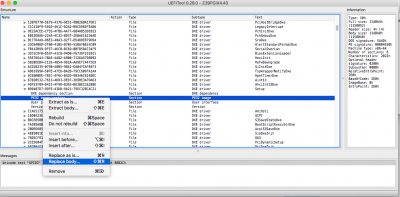/*
* Intel ACPI Component Architecture
* AML/ASL+ Disassembler version 20161210-64(RM)
* Copyright (c) 2000 - 2016 Intel Corporation
*
* Disassembling to non-symbolic legacy ASL operators
*
* Disassembly of iASLI5x7qz.aml, Sun Sep 1 21:42:58 2019
*
* Original Table Header:
* Signature "SSDT"
* Length 0x000002C8 (712)
* Revision 0x02
* Checksum 0x40
* OEM ID "APPLE "
* OEM Table ID "TbtOnPCH"
* OEM Revision 0x00001000 (4096)
* Compiler ID "INTL"
* Compiler Version 0x20161210 (538317328)
*/
DefinitionBlock ("", "SSDT", 2, "APPLE ", "TbtOnPCH", 0x00001000)
{
External (_SB_.PCI0.RP01, DeviceObj) // (from opcode)
External (_SB_.PCI0.RP01.PXSX, DeviceObj) // (from opcode)
External (_SB_.PCI0.XHC_, DeviceObj) // (from opcode)
External (DTGP, MethodObj) // 5 Arguments (from opcode)
External (PXSX, DeviceObj) // (from opcode)
Scope (_SB.PCI0.RP01)
{
Scope (PXSX)
{
Name (_STA, Zero) // _STA: Status
Method (NTFY, 2, NotSerialized)
{
If (LEqual (Arg0, 0x02))
{
Notify (\_SB.PCI0.RP01.UPSB.DSB0.NHI0, 0x02)
}
}
}
Device (UPSB)
{
Name (_ADR, Zero) // _ADR: Address
Method (_STA, 0, NotSerialized) // _STA: Status
{
Return (0x0F)
}
Device (DSB0)
{
Name (_ADR, Zero) // _ADR: Address
Method (_STA, 0, NotSerialized) // _STA: Status
{
Return (0x0F)
}
Device (NHI0)
{
Name (_ADR, Zero) // _ADR: Address
Name (_STR, Unicode ("Thunderbolt")) // _STR: Description String
Method (_STA, 0, NotSerialized) // _STA: Status
{
Return (0x0F)
}
Method (_DSM, 4, NotSerialized) // _DSM: Device-Specific Method
{
If (LEqual (Arg0, ToUUID ("a0b5b7c6-1318-441c-b0c9-fe695eaf949b")))
{
Store (Package (0x0B)
{
"AAPL,slot-name",
Buffer (0x09)
{
"Built In"
},
"device_type",
Buffer (0x19)
{
"Thunderbolt 3 Controller"
},
"model",
Buffer (0x1E)
{
"GC Titan Ridge TB3 Controller"
},
"name",
Buffer (0x0F)
{
"UPSB-DSB0-NHI0"
},
"power-save",
One,
Buffer (One)
{
0x00
}
}, Local0)
DTGP (Arg0, Arg1, Arg2, Arg3, RefOf (Local0))
Return (Local0)
}
Return (Zero)
}
}
Method (_DSM, 4, NotSerialized) // _DSM: Device-Specific Method
{
If (LEqual (Arg0, ToUUID ("a0b5b7c6-1318-441c-b0c9-fe695eaf949b")))
{
Store (Package (0x06)
{
"model",
Buffer (0x0A)
{
"UPSB-DSB0"
},
"name",
Buffer (0x0A)
{
"UPSB-DSB0"
},
"PCIHotplugCapable",
One
}, Local0)
DTGP (Arg0, Arg1, Arg2, Arg3, RefOf (Local0))
Return (Local0)
}
Return (Zero)
}
}
Method (_DSM, 4, NotSerialized) // _DSM: Device-Specific Method
{
If (LEqual (Arg0, ToUUID ("a0b5b7c6-1318-441c-b0c9-fe695eaf949b")))
{
Store (Package (0x06)
{
"model",
Buffer (0x0A)
{
"UPSB"
},
"name",
Buffer (0x0A)
{
"UPSB"
},
"PCI-Thunderbolt",
One
}, Local0)
DTGP (Arg0, Arg1, Arg2, Arg3, RefOf (Local0))
Return (Local0)
}
Return (Zero)
}
}
}
}






